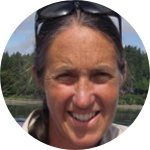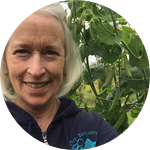About This Project
Most people are not aware that enormous quantities of microfibers and plastic not readily visible to the naked eye are present in marine waters. These pollutants are consumed by small food chain animals such as fish and mussels. Either directly or indirectly some of this plastic will be consumed by people. The goal of this project is to quantify the concentration of these pollutants in the size range of 63um to 5mm in the water column from Puget Sound, WA to Glacier Bay, AK.
Ask the Scientists
Join The DiscussionWhat is the context of this research?
In 2014 a paper jointly authored by three Canadian organizations documented concentrations of microfibers in waters surrounding Vancouver Island as high as 9,200 per cubic meter. The 34 samples were all collected at a depth of 3.5 meters. No other peer reviewed report has quantified subsurface microscopic anthropogenic debris. To this we add the observations of fibers in filter feeders such as the mussel Mytilus and even in 62% of scampi collected in the North Sea. While the 34 samples cited above should serve as a wake-up call, it does not provide the needed resolution or understanding of microfiber geography or distribution in the water column. This study aims to significantly improve our understanding of microscopic plastic in the marine environment.
What is the significance of this project?
A great deal of research, including my own, has been conducted on the distribution of plastic debris in surface waters. This research has almost exclusively targeted plastic larger than 333 um collected by manta trawl (a surface skimming plankton net). Very little research has been done on the presence of anthropogenic debris in the water column. The potential impact of nanoplastic (smaller than 333 um) on filter feeders, such is bivalves and zooplankton, is just being recognized. This study will be the most extensive study of nanoplastic distribution ever conducted.
This study will provide samples of mussels (Mytilus sp.) for a study on the presence of microfibers being conducted at the University of Washington’s Friday Harbor Laboratory.
What are the goals of the project?
The goal is to quantify the density and chemical nature of plastic or microfibers between the size of 63 um and 5 mm found in the water column of the Salish Sea and northward within the Inside Passage to Glacier Bay, Alaska. To achieve this goal we will take samples at multiple depths from subsurface to a maximum of approximately 100 feet. Determining the chemical nature of the plastic and microfibers will be conducted using Infra-Red Spectroscopy.
Budget
The funds requested cover the cost of the scientific collecting and laboratory equipment as well as diesel fuel. Regardless of how much field work is conducted, all of the equipment is required. Supplies represent a small portion of what is being requested and are sufficient for all research as far north as Glacier Bay. The fuel cost of $1,500 is only sufficient to cover research in the Salish Sea and Inside Passage from Puget Sound to the north end of Vancouver Island. Thus, the $4,070 in the budget only covers this far. Funds received beyond $4,070 will allow fuel to be purchased for research in northern British Columbia and Alaska. Should funds exceed. $6,000 we will be able to hire temporary student help to facilitate processing of the samples.
Field work will be conducted by me. Laboratory work will be performed at the University of Washington’s campus in Bothell, WA. by Dr. David Sommerfeld, me and, potentially, undergraduate students.
Endorsed by
Meet the Team
Wally Davis
I obtained a master’s degree and completed the course work for a Ph.D. in zoology at UC Berkeley in 1968 then, at the height of the Vietnam War, joined the Navy as a pilot. After serving 5 years active duty, I went to work for an electric utility company, obtained a second master’s degree in business and continued to fly for the Navy as a reservist. I spent about 25 years managing environmental programs and writing environmental reports for electric utilities. When construction of new power plants came to a near halt, the amount of environmental work diminished significantly. My background in statistics and mathematics allowed me make a mid-life career change to quality assurance. I retired as the Director of Quality from a multinational electric/electronics company. I also retired from the Navy as a Commander.
Rekindling my love of biology and the environment, in 2010 I began taking upper division and graduate courses in the University of Washington’s Biology Department; an activity I still pursue at the rate of 3 or 4 courses a year. Since 2011 I have been studying anthropogenic microplastic in marine waters and beaches of the Pacific Northwest. In 2015 I was the lead author of a paper published in the Marine Pollution Bulletin titled Plastic in surface waters of the Inside Passage and beaches of the U.S. Salish Sea.
David Sommerfeld
David A. Sommerfeld (BS – Chemistry from University of Minnesota (1988); Ph.D. – Physical Chemistry from University of Utah (1995))
Since 2014, Professor Sommerfeld has been a Senior Lecturer at The University of Washington Bothell where his principle duties focus on the physical chemistry curriculum. He taught for 10 years at the University of Massachusetts – Amherst as the Director of Undergraduate Upper Division Labs where he learned much of his analytical chemistry by doing analytical chemistry. Throughout his career he has had an interest in environmental chemistry. His post-doc experience was at UC – Irvine in the Rowland research group where investigated the origin of atmospheric carbonyl sulfide. While at Lamar University he mentored students who used pine needles as passive collectors for polychlorinated biphenyls to study the distribution of these environmental contaminants in the East Texas Piney Woods. And he helped establish a water quality monitoring program for the Lake Greenwood reservoir with students at Lander University.
Lab Notes
Nothing posted yet.
Additional Information
Field work will be conducted on a 40’ trawler that I own and used for previous research on microplastic in surface waters from Puget Sound, WA to Skagway, AK. Beginning in March 2017 preliminary studies will be conducted in the vicinity of Everett, WA to evaluate sample variability. The major field work will be conducted from May through August 2017. Should additional data be needed, supplemental studies within the Salish Sea (but probably not northward) may be conducted in 2018. Preliminary laboratory work will be conducted during March and April 2017 with the majority of the work being conducted during the fall and winter of 2017/18.
Laboratory work will be conducted in facilities at the University of Washington, Bothell. Results of this research will be published in a peer reviewed journal such as the Marine Pollution Bulletin.
Project Backers
- 0Backers
- 0%Funded
- $0Total Donations
- $0Average Donation




